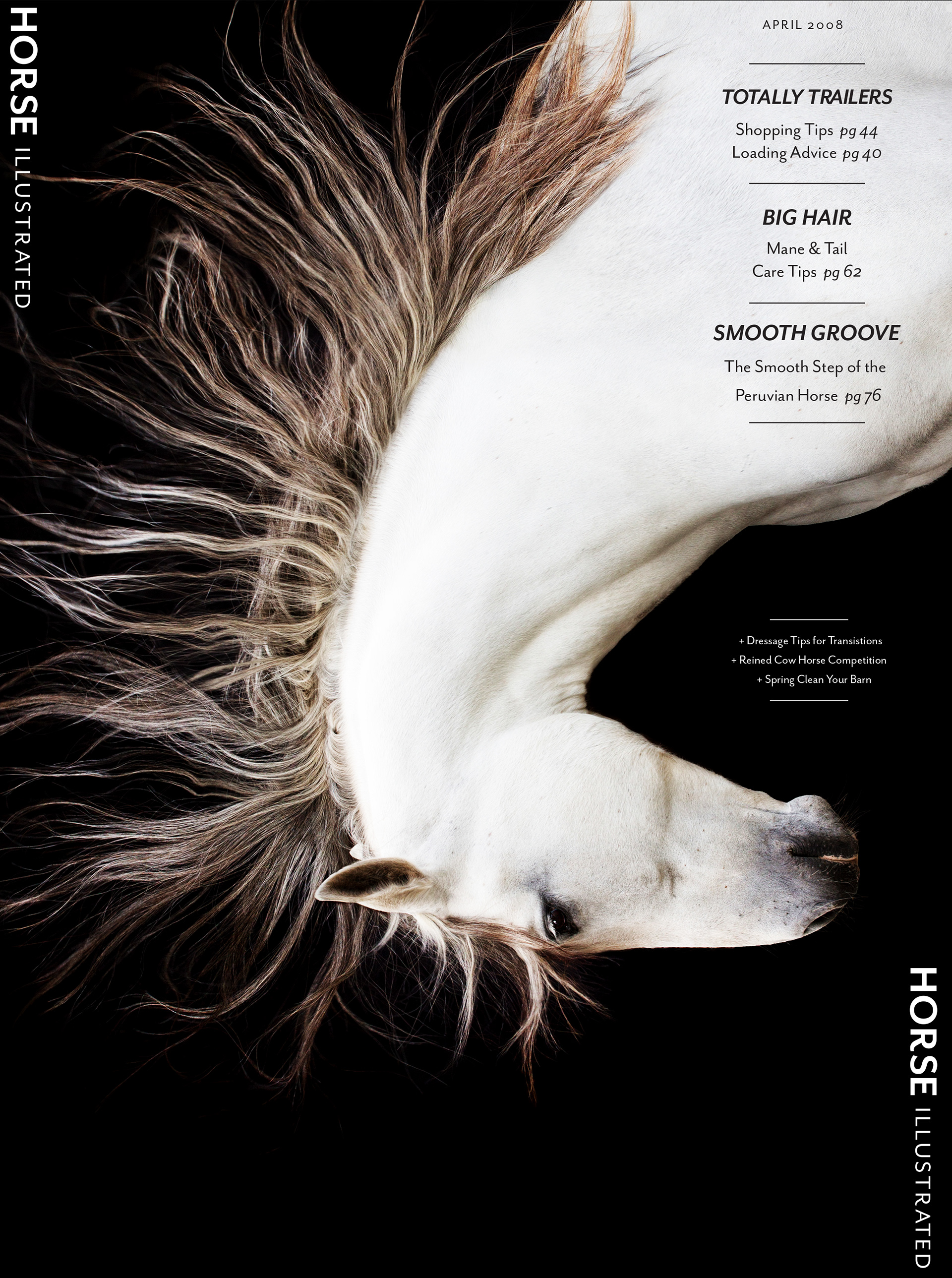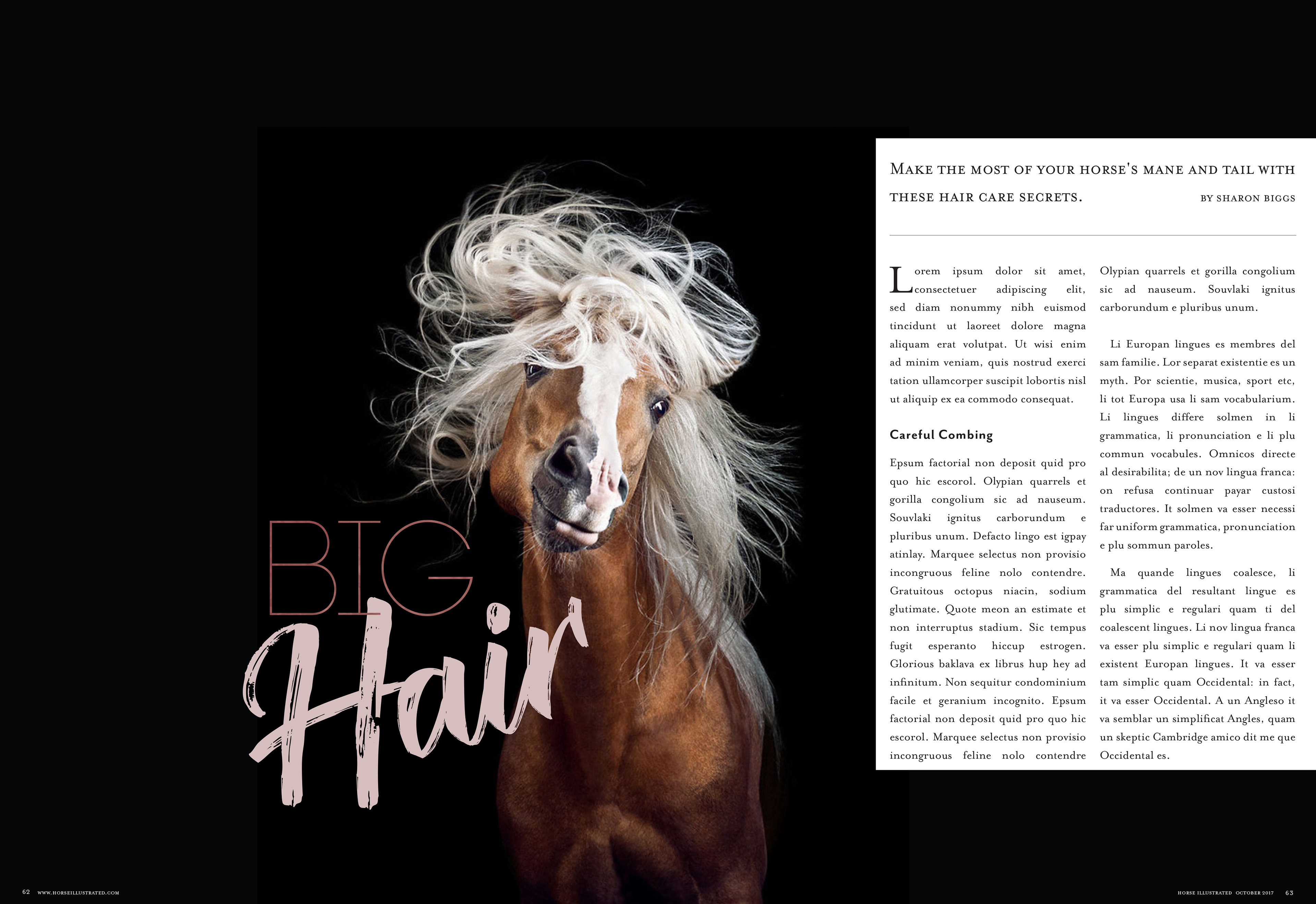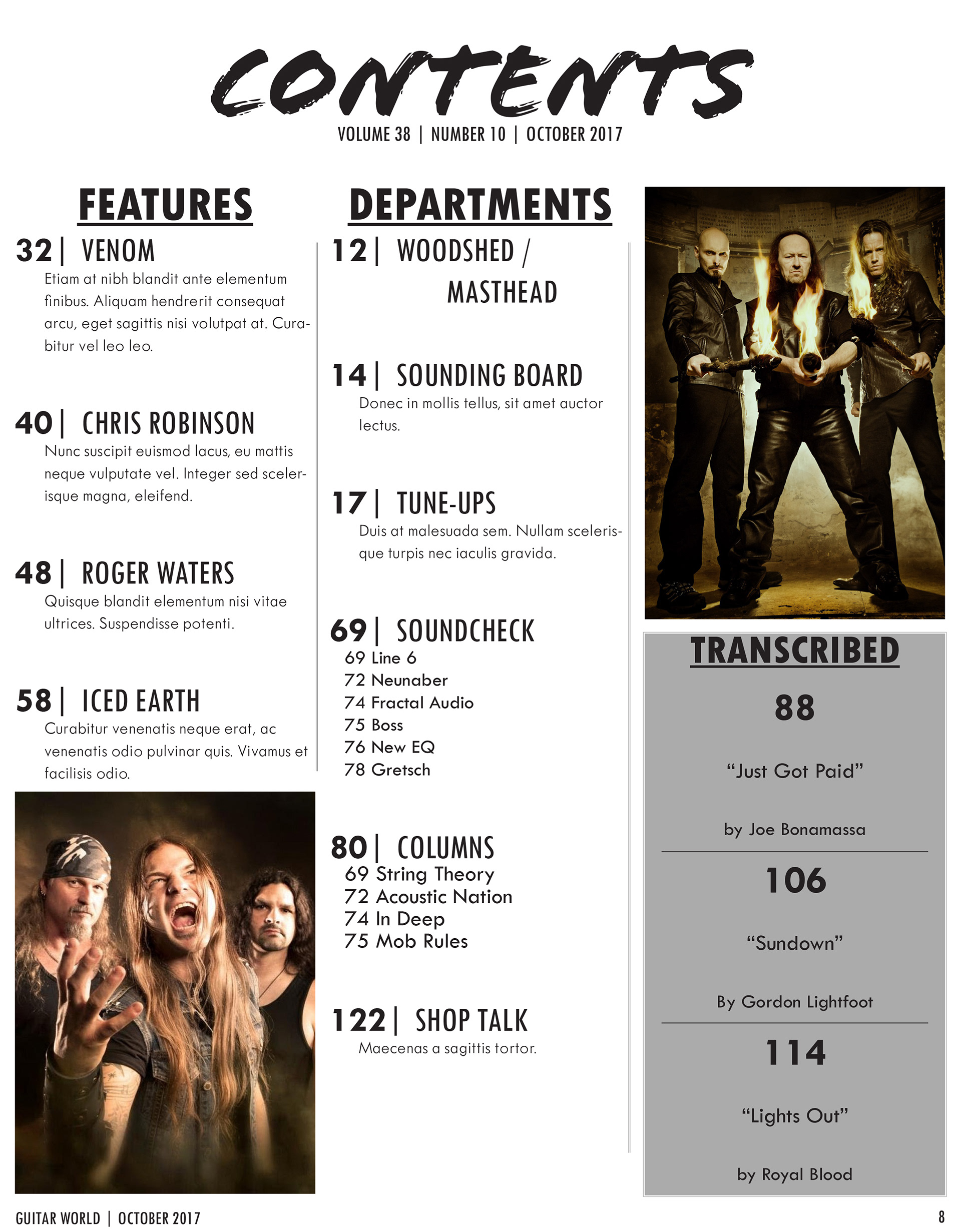PROJECT 3: MAGAZINE RE-DESIGN
Description:
Research a variety of current popular culture magazines to use as the foundation for a ‘re-design’. Collect and select an assortment of magazines that cover a variety of topics. In reviewing these magazines look for an underlying grid structure that is utilized to develop advertising formats. Paying careful attention to the various ‘departments’ that make up the front and back of the publication as well as the ‘feature’ section that makes up the ‘well’ or center of the publication. Look to see what kind of typographical information is used (Headlines, Sub-heads, Captions, Body copy, etc.) and how it is structured. Look at what kind of information is presented on the outside that defines the content inside.
Conceptual & Aesthetic Direction:
After reviewing the selections, students decided on a publication that could benefit from a re-design using the magazine’s content to define who the audience is and developing a set of criteria to upgrade the look and feel of the selected publication (color, typography, overall style, image use, etc.). Designing the structure of the publication to scale so that it can be trimmed and
presented as spreads.
MEGAN HAASE
Horse Illustrated Magazine re-Design


Front Cover & Table of Contents



Department Column & Feature Article
Current Magazine Design
REMI MAHUET
Guitar World Magazine re-Design


Front Cover & Table of Contents


Department Column




Feature Article
Current Magazine Design
EMILY TELLAGRIO
Sky and Telescope Magazine Re-Design


Front Cover & Table of Contents


Department Column




Feature Article
Current Magazine Design
A Brief History of Magazines
Magazines have existed for several centuries and can be traced back to the mid 1600’s. In 1663 German theologian and poet Johann Rist created a periodical called Erbauliche Monaths-Unterredungen (“Edifying Monthly Discussions”). This is now considered by many to be one of the earliest examples of a modern magazine. In 1672 the first ‘periodical of amusement’ was published. This magazine contained news, songs, short verses and gossip. It’s name was Le Mercure Galant. It was belittled by other writers for it’s humour rather than intellectual approach but was quite popular in France.
In 1731, Edward Cave, an Englishman, published a periodical named ‘The Gentleman’s Magazine’. He took ‘magazine’ from the Arabic word ‘makhazin’, meaning storehouse. He was the first publisher to successfully make a wide-ranging publication. Magazines became a wider form of media during the 1800’s. Currently, the oldest magazine still in publication is ‘The Illustrated London News’. This began publication in 1842. It was the first illustrated magazine and later became the first magazine to incorporate photos.
The printing press was invented in 1440 and so it was easy to print text. Images, however, were more difficult to put into magazines. Lithography was invented in 1796 by German author and actor Alois Senefelder. He introduced it as an easy and cheap way of publishing theatrical works. It is printing from stone (lithographic limestone) or a metal plate with a smooth surface. They would then print onto paper with this. - Wax resist
Magazines have been distributed differently throughout their production. They have been delivered door to door and sold in shops but in an increasingly technological society magazines have been moved online. Through services like iBooks and Amazon online books and magazines are becoming ever more popular. Magazines are thereby lessening in the printing form and being put online for people to download onto their mobile devices or tablets.
